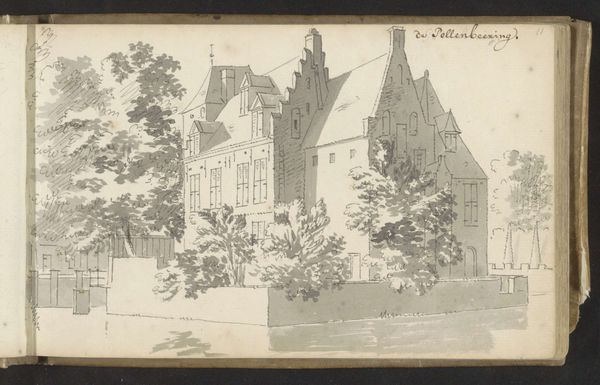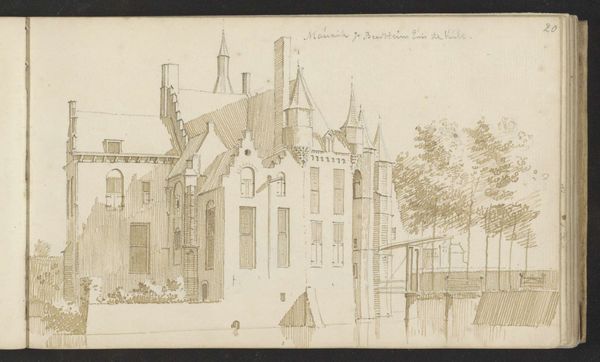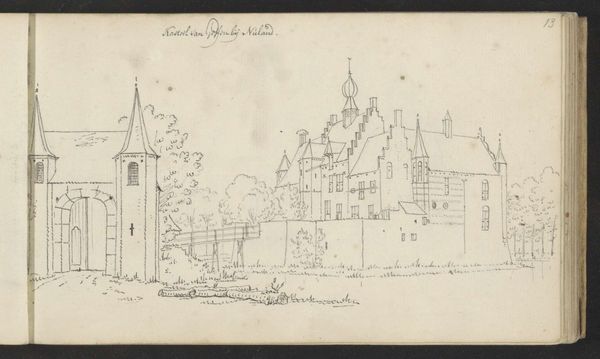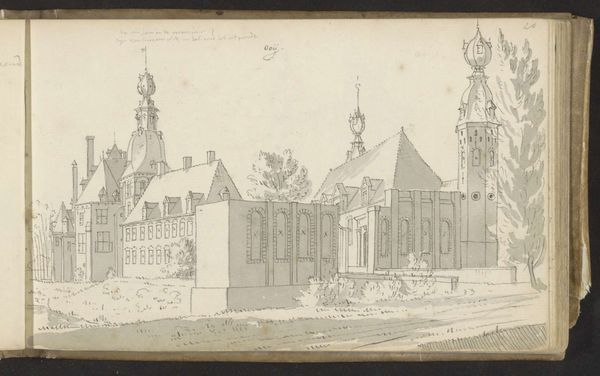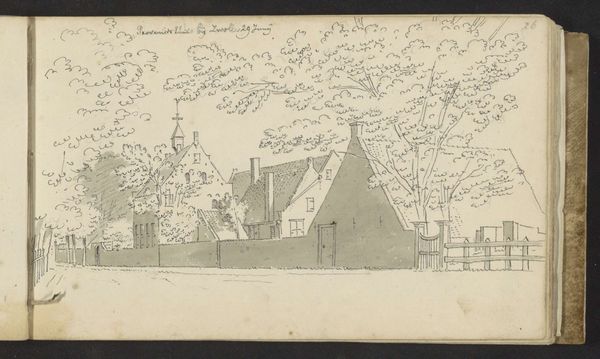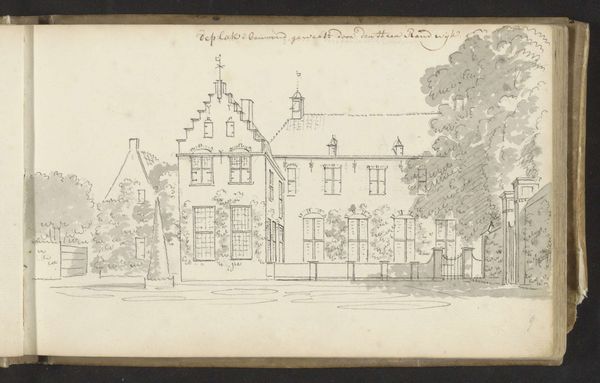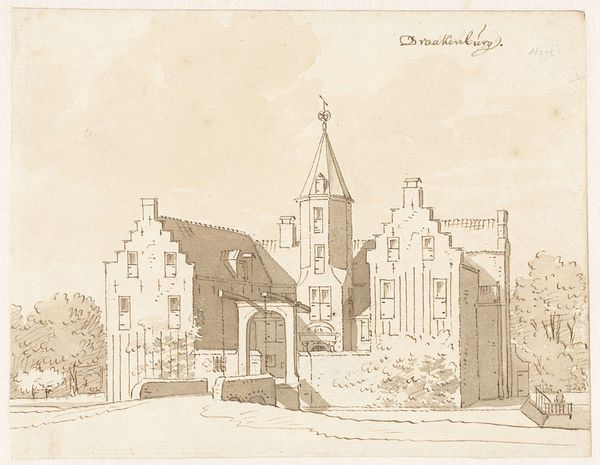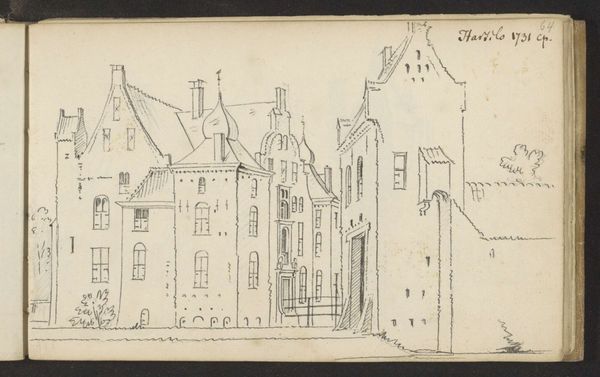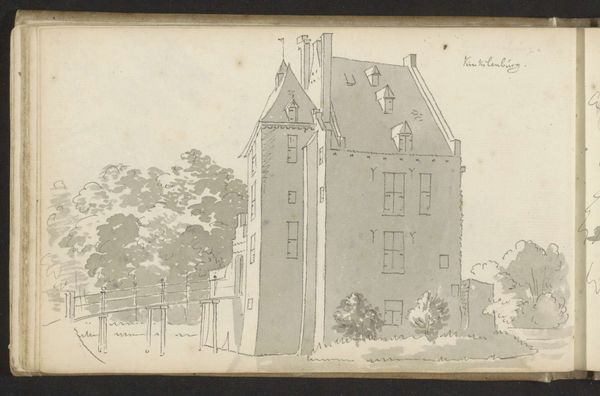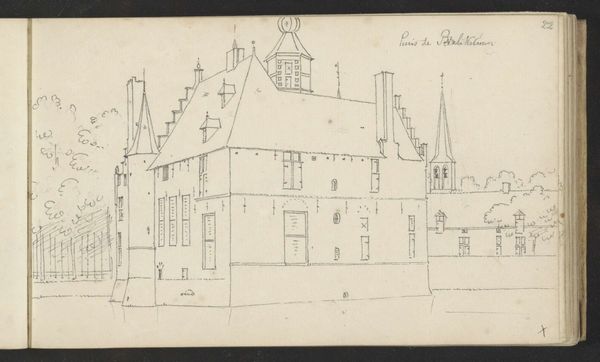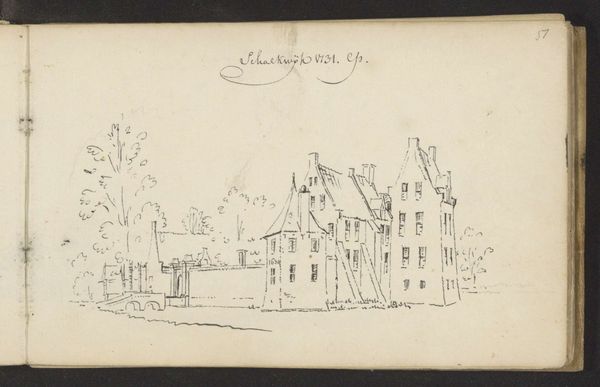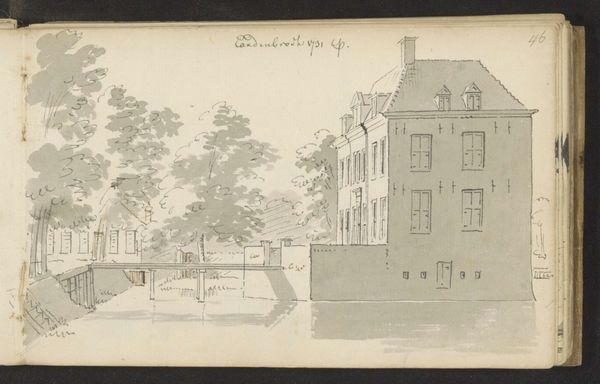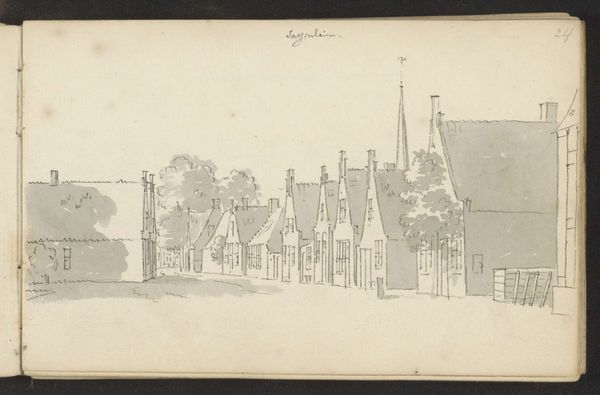
drawing, paper, ink, pencil
drawing
aged paper
quirky sketch
baroque
pen sketch
sketch book
landscape
paper
personal sketchbook
ink
sketchwork
pen-ink sketch
pencil
pen work
sketchbook drawing
cityscape
sketchbook art
Copyright: Rijks Museum: Open Domain
Editor: This pen and ink drawing from 1731, titled "Hof te Rijnsburg" by Abraham de Haen the Second, has this calm, almost somber feel. The light is soft and diffused. What do you see in this piece? Curator: It's more than just a cityscape; it’s a portrait of a place grappling with change, isn't it? De Haen captures a very specific moment. In the 18th century, the Dutch Republic was economically declining, a stark contrast to its Golden Age. How might the choice of subject, this Hof, or courtyard, reflect broader societal shifts or power dynamics? Editor: I hadn't considered the economic decline. The courtyard looks pretty quiet and solid. Maybe it’s a symbol of holding on to tradition during uncertain times? Curator: Precisely! And consider Rijnsburg itself, once a significant religious center. Now, visualise it not just as architecture, but as a site loaded with historical weight, reflecting questions around shifting religious landscapes. It begs the question, who has access to this "hof" and whose stories are often untold, buried beneath the formal composition? Editor: So, it’s not just a pretty picture. It’s about power and place… and maybe who gets to define them. I guess looking closely at what's included - and what's left out - tells a big story. Curator: Exactly! And by extension, what responsibility do we, as viewers and interpreters, have in excavating these silenced narratives when looking at a piece such as this? Editor: This really changes how I see landscapes. Thanks! I will keep this in mind. Curator: As will I!
Comments
No comments
Be the first to comment and join the conversation on the ultimate creative platform.

